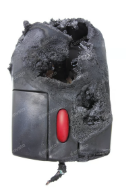As technology continues to advance, our reliance on electronic devices has never been greater. From computers and smartphones to gaming consoles and home appliances, we use technology in almost every aspect of our lives. However, one of the often-overlooked threats to our devices is heat damage. Excessive heat can lead to a host of problems, including reduced performance, shorter lifespan, and even complete failure of your gadgets. In this blog, we will explore how heat affects technology and provide practical tips for protecting your devices from heat damage.
Understanding Heat Damage in Technology
Heat damage occurs when electronic devices operate at temperatures beyond their designed limits. Internal components, such as processors, batteries, and motherboards, generate heat during normal operation. If that heat is not dissipated properly, it can cause:
- Reduced Performance: Overheating can lead to throttling, where devices slow down to prevent further temperature increases. This impacts functionality and user experience.
- Component Failure: Prolonged exposure to high temperatures can result in permanent damage to sensitive internal parts, leading to costly repairs or replacements.
- Battery Degradation: Heat is particularly detrimental to batteries. It can accelerate chemical reactions within lithium-ion batteries, reducing their capacity and lifespan.
- Data Loss: Sudden shutdowns due to overheating may result in corrupted files or lost data, especially if the device is not saved properly before a crash.
Tips for Protecting Your Technology from Heat Damage
- Ensure Proper Ventilation
- Keep Devices in Open Spaces: Ensure that your devices have enough space around them to allow for proper airflow. Avoid placing them in enclosed spaces or near heat sources, such as radiators or direct sunlight.
- Use Cooling Stands: For laptops or gaming consoles, consider using cooling pads or stands that promote airflow and help regulate temperature.
- Monitor Ambient Temperature
- Ideal Temperature Range: Keep your devices in a climate-controlled environment, ideally within the range of 50°F to 85°F (10°C to 29°C). Extreme temperatures can lead to malfunctions or damage.
- Be Cautious in Hot Conditions: If you live in a particularly hot climate, take extra precautions to ensure your technology is protected from excessive heat, especially during summer months.
- Regular Cleaning and Maintenance
- Dust and Debris: Dust buildup inside devices can block ventilation openings and insulate components, leading to overheating. Regularly clean the exterior and interior (when safe) of devices using compressed air to remove dust from fans and vents.
- Keep Fans Functioning: Ensure that all cooling fans are functioning correctly. If a fan is malfunctioning, consider replacing it to maintain efficient airflow.
- Limit Intensive Tasks in High Heat
- Avoid Overloading: Running high-performance tasks, such as gaming, video editing, or heavy multitasking, during hot days can exacerbate heat issues. Schedule intensive activities for cooler times of the day, if possible.
- Monitor Temperatures: Use software tools that monitor your device’s temperatures and performance. Alerts can help you take action before overheating becomes a problem.
- Use Quality Power Sources
- Certified Chargers: Always use the manufacturer-recommended power adapters and chargers. Off-brand or low-quality chargers can generate excessive heat and compromise your device’s safety.
- Avoid Overcharging: Unplug devices once they reach full charge to avoid generating extra heat. Some newer devices have built-in mechanisms to manage charging, but being cautious is still important.
- Battery Care
- Battery Temperature: Keep devices within recommended temperature ranges for battery safety. Avoid exposing portable devices (like laptops and smartphones) to direct sunlight or leaving them in hot cars.
- Regular Calibration: Occasionally allow your battery to go through a full discharge and recharge cycle to keep performance optimal.
- Secure Software Updates
- Keep Software Updated: Regularly update your operating system and applications, as updates often include performance improvements and optimizations that may help manage power consumption and heat generation.
- Optimize Background Processes: Disable unnecessary background apps that may put extra strain on your device, generating additional heat.
Heat damage is a genuine threat to the longevity and performance of your technology. By taking proactive steps to protect your devices from excessive heat, you can significantly enhance their lifespan and performance. Regular maintenance, proper ventilation, and awareness of ambient temperatures are key to ensuring your electronics remain in top condition.
